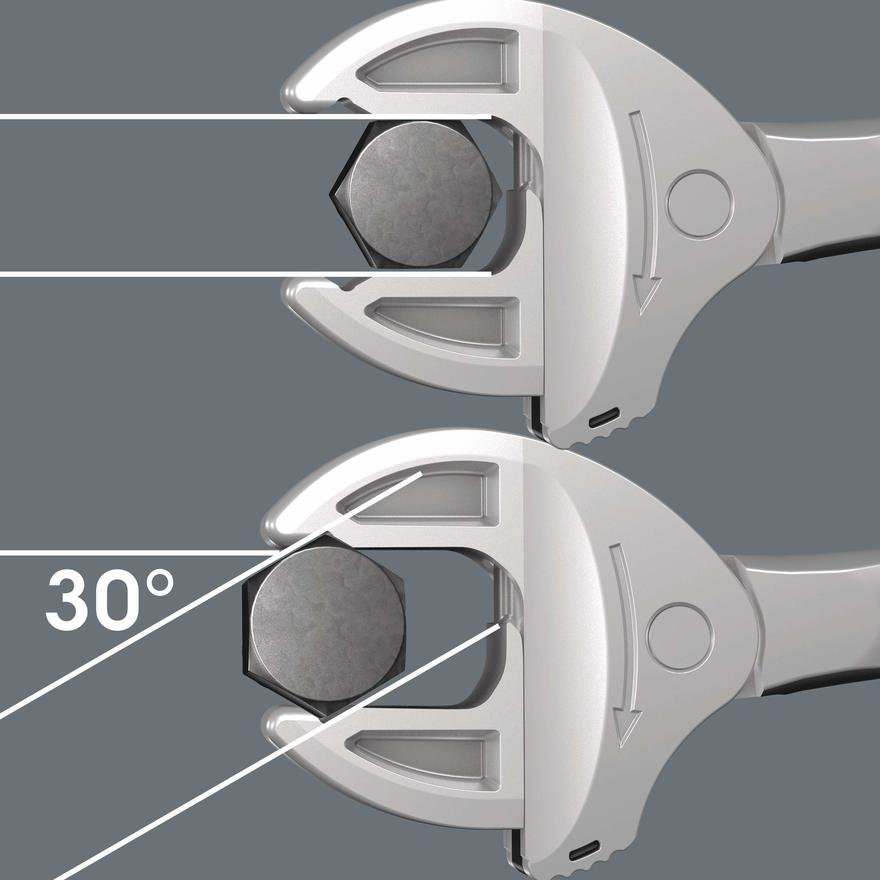Two Different Design Approaches to Adjustable Wrenches
The Knipex Pliers Wrench and the Wera Joker
The adjustable wrench was invented roughly 200 years ago, and must have seemed amazing at the time. But here in the age of precision tools, they seem clunky and inelegant, as you have to loosen and re-tighten the screw with each turn. Do this hastily, and you risk rounding the nut.

Two German manufacturers have refined the design of the adjustable wrench with vastly improved UX, offering greater speed and a more secure connection.
The Knipex Pliers Wrench, invented in the mid-'90s, is a cross between slip-joint pliers and an adjustable spanner. It features fast adjustment and push-button convenience, rather than requiring the user to painstakingly thumb a screw.

With the Knipex design, you push a button and slide the lower jaw to the distance you'd like, then you release the button, press the handles together and it locks in place.
And because the jaws release slightly when you ease up on the handles, the tool delivers a ratcheting action:
Competitor Wera has taken a very different design approach with their self-setting Wera 6000-series Joker.

First off, the entire head is on a pivot and the jaws release slightly when the handle is turned in the non-tightening direction. This is what provides the ratcheting action.

Secondly it can grab nuts on the flats, as all wrenches do, but can also grab them by the corners thanks to V-shaped cuts in the jaws.


If you're wondering why that's significant, see the animation below. Being able to grab both flats and corners allows you to take multiple short swings for faster turning--super useful when working in a tight spot with limited throw room.
Here's where the design gets really different. Unlike with the Knipex tool, the Joker's jaws are not user-adjustable. Instead the jaws cover a small range of sizes within a 3mm range; i.e. you buy one Joker for 7mm-10mm nuts, another for 10mm-13mm, etc. So to cover a range from 7mm-19mm (¼" to ¾"), you'd need to buy a set of four wrenches.

That can get expensive—about $180—and is more to carry around, so you might wonder: Why would anyone go for the Jokers, versus a single Knipex that can cover the same span for 40 bucks and change?
The answer is, application. Below, a mechanic demonstrates a specific use case where the Joker can do a job that the Knipex Pliers Wrench cannot:
Enter a caption (optional)
That being said, I admire both designs. Tradespeople might prefer to have both options on hand for flexibility's sake, but the Knipex Pliers Wrench makes better sense for the average DIY'er (and takes up less space in a drawer).
-
o6Favorite This
-
Q3Comment
K
{Welcome
Create a Core77 Account
Already have an account? Sign In
By creating a Core77 account you confirm that you accept the Terms of Use
K
Reset Password
Please enter your email and we will send an email to reset your password.


Comments
Have Knipex-style tool in my disposal. It belongs to one friend who appears to bought this recently. Works great for plumbing work in the house, because it holds on tubes and everything better then conventional tools.
I've seen a lot of clever wrench designs. Many of them are beautiful and ingenious. I always go back to a chunk of metal with no moving parts, one that can take a huge amount of stress and a lot of abuse.
I've got parallel jaw pliers, things that adjust themselves, wrenches that do what this Joker wrench does by jaw geometry instead of mechanisms. Once in a blue moon I pull one out and admire it. Most of the ones with moving parts fail, eventually. Any mechanic will reach for a fixed wrench before a crescent wrench, if he has one. Crescents are perfect in their way, but a fixed wrench is still what one uses first.
There are some things it's tempting to improve, and clever design is nice to admire, but some things settled into their most useful form a century ago.
That's an interesting post. Thanks.